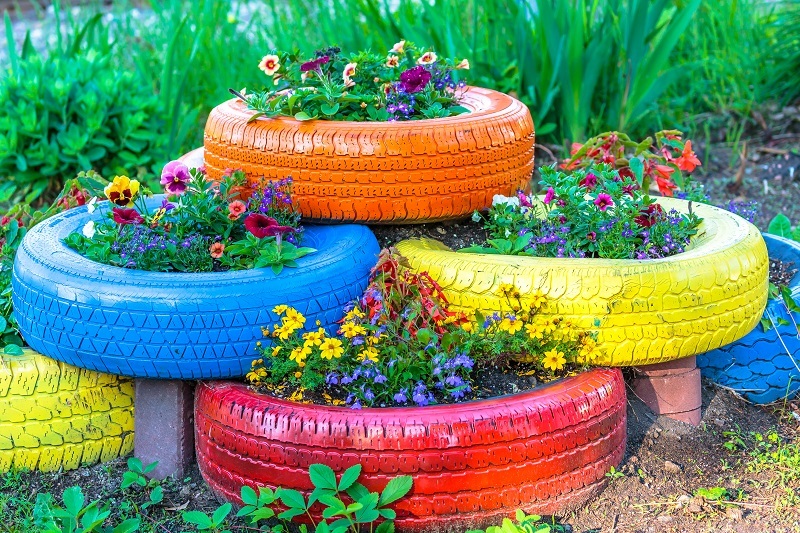Unmasking Tulips: 7 Intriguing Facts Hidden from Most
Posted on 14/08/2025
Unmasking Tulips: 7 Intriguing Facts Hidden from Most
Elegant, vibrant, and instantly recognizable, tulips are beloved the world over. Yet, behind these colorful blooms lies a treasure trove of secrets that most admirers never uncover. Prepare to be enchanted as we peel back the petals and delve into the fascinating history, science, and surprising stories of this iconic flower. Read on for an expansive revelation about tulips that will deepen your admiration and understanding of this remarkable plant.
1. Tulips Didn't Originate in the Netherlands
Ask someone where tulips come from, and most will immediately think of Holland--or more precisely, the Netherlands. While the Dutch are justifiably famous for their breathtaking tulip fields, the true origins of tulips lie far to the east.
The Silk Road Connection
- Native Lands: Tulips originated in Central Asia, specifically the Tien Shan Mountains and surrounding steppes of Kazakhstan, Uzbekistan, and parts of Eastern Turkey.
- Early Cultivation: They were cultivated as early as the 10th century by the Persians and later came to prominence in the Ottoman Empire (modern day Turkey).
- Journey to Europe: It wasn't until the 16th century that tulip bulbs made their way to Western Europe via intrepid traders and passionate botanists, forever changing the floral landscape.
Next time you stroll through tulip-studded Dutch fields, remember to appreciate the ancient journey that brought these bulbs across continents and centuries.

2. The Tulip Mania: History's First Economic Bubble
The term "mania" is often used to describe irrational enthusiasm. But did you know the original "mania" was all about tulips?
Unprecedented Frenzy: The Dutch Tulip Bubble
- In the 1630s, tulips became a bona fide obsession in the Dutch Golden Age.
- Rare and vividly colored varieties transformed from plant to status symbol, traded by the country's elite.
- Prices for the most unique bulbs soared--at one point, single bulbs sold for more than the cost of a canal house in Amsterdam.
- The Crash: The bubble burst spectacularly in 1637, creating economic turmoil and giving rise to cautionary tales that echo to this day.
Tulip Mania stands as one of the earliest and most dramatic financial bubbles in history, making tulips a symbol of both beauty and boom-and-bust cycles.
3. There Are Over 3,000 Registered Tulip Varieties
Think you've seen every possible tulip color and shape? Think again!
Dazzling Diversity Among Tulips
- Today, more than 3,000 officially recognized cultivars fill gardens and flower shops around the world.
- These are organized into 15 different groups based on flower shape, size, and blooming period.
- Color Spectrum: Tulips exist in almost every color except for true blue, including whites, yellows, reds, pinks, purples, oranges, and even multi-colored "broken" varieties that appear hand-painted.
- Parrot tulips feature feathery fringes, while double tulips boast peony-like fullness.
The world of tulips is endlessly surprising, with something new for collectors and casual admirers every season.
4. The Tulip's "Secret Signal" to Bees
It's not just humans who are captivated by tulips. These flowers have evolved a secret method to attract pollinators.
For Pollinators Only: Thermoregulation
- Petal Warmth: In the morning, tulip petals close and trap the heat of the sun, creating a warm "micro-climate" inside the flower.
- Bee Beacon: This warm environment becomes irresistible to bees, who seek out the heat after a cold night.
- Pollinator Magnet: The result is both pollinator and flower benefit--bees get warmth and pollen, tulips get help reproducing.
Next time you spot a bee diving into a tulip, know that it's responding to a signal invisible to the human eye!
5. Tulips and the Language of Flowers
Tulips are more than a feast for the eyes--they're a powerful communicator in the "language of flowers," also known as floriography.
Symbolic Meanings Vary by Color
- Red Tulips: Declare true love and are sometimes called the Valentine's Day flower of choice.
- Yellow Tulips: Once associated with hopeless love, but now commonly linked to cheerful thoughts and friendship.
- Purple Tulips: Suggest royalty and admiration.
- White Tulips: Stand for forgiveness and purity.
- Variegated Tulips: (Striped or multi-colored) Represent beautiful eyes.
Each tulip color carries a unique message, making tulip bouquets a nuanced and thoughtful gift for any occasion.
6. Tulips Are Edible (But with a Catch)
This might surprise you: tulip petals and bulbs are technically edible. However, don't rush to your garden just yet.
From Starvation Food to Modern Gastronomy
- WWII Starvation: During the "Hunger Winter" of 1944-45, Dutch citizens resorted to eating tulip bulbs to survive wartime famine. Many reported the taste as bitter and starchy, with some bulbs even causing illness due to toxins.
- Petal Uses: Some celebrity chefs have experimented with clean, pesticide-free tulip petals as garnishes or salad ingredients for their delicate flavor and bright color.
- Warning: Not all tulips are safe to consume--bulbs especially may cause health issues if improperly prepared or sourced from non-food-grade suppliers.
If you're curious about edible tulips, treat them as a novelty--not a staple.
7. Tulips Glow in the "Ultraviolet" World
There's another layer to the tulip's allure that humans can't see--but pollinators can.
Hidden Patterns Under Ultraviolet Light
- Secret Signals: Under specialized UV light, tulip petals reveal distinct patterns that act as landing paths for bees, guiding them to the flower's center.
- Invisible Artwork: These UV markings are invisible to human eyes but are crucial for the flower's reproductive cycle.
- Evolution at Work: This adaptation maximizes the chances of successful pollination, demonstrating the tulip's evolution over time with its insect partners.
Next time you admire the flawless color of a tulip, imagine the secret "artwork" glowing just beyond the spectrum you can see.
Tulip Insights: Bonus Fascinations
The World's Largest Tulip Gardens
- Keukenhof Gardens: Located in Lisse, Netherlands, Keukenhof is the globe's most extensive tulip showcase, displaying around seven million bulbs every spring.
- International Festivals: Cities from Ottawa to Istanbul host vibrant tulip festivals, drawing millions of visitors and celebrating the tulip's cultural impact.
Tulips in Art and Literature
- Golden Age Paintings: Dutch Master artists like Jan Brueghel and Rachel Ruysch immortalized tulips in exquisite still lifes.
- Modern Motifs: Contemporary designers and textile artists frequently use tulip motifs to evoke freshness, renewal, and springtime optimism.

How to Care for Tulips: Expert Gardening Tips
Bringing Tulip Beauty into Your Yard
- When to Plant: Plant tulip bulbs in autumn, about 6-8 weeks before the first hard frost.
- Soil Requirements: Ensure well-draining soil; tulips despise "wet feet."
- Depth: Plant bulbs about 6-8 inches deep, with the pointy end up.
- Sunlight: Choose a spot with full sun for the most vibrant blooms.
- Post-Bloom Care: Allow foliage to yellow and die back naturally to fortify the bulb for next year.
- Naturalizing: Try planting "species" tulips, which often return year after year in the garden for a natural, wild look.
By following these simple steps, you can unlock a tapestry of color every spring--right at your doorstep.
Conclusion: Tulips, Unmasked
The next time you admire a tulip's simple beauty, remember that there's more than meets the eye. These exquisite flowers boast origins shrouded in trade and mystery, a legacy as both luxury and lifeline, and an intricate relationship with both pollinators and humans. Whether you're drawn by their history, diversity, symbolism, or secret science, there's always another layer waiting to be discovered.
Unmasking tulips reveals that beneath every vibrant petal is a story worth telling--a feast for the senses, history buffs, economists, gardeners, and romantics alike. Ready to explore your own tulip adventure? Share these hidden facts with friends and see if you can spot the secret signs and stories behind every bloom.
Quick Facts at a Glance:
- Origins: Central Asia, not Holland
- Tulip Mania: The world's first economic bubble
- Varieties: Over 3,000 recognized cultivars
- Pollination: Warmth and UV patterns lure bees
- Symbolism: Colors convey hidden messages
- Edibility: Both survival food and gourmet garnish (use caution!)
- Light Magic: Petals glow in ultraviolet for pollinators
From ancient roots to modern gardens, the tulip's legacy continues to unfurl, petal by fascinating petal.
Latest Posts
Year-Round Hydrangea Care for Lasting Blooms
The Heritage and Heart of Red Roses on Valentine's
The soothing presence of flowers: a key to emotional enrichment







